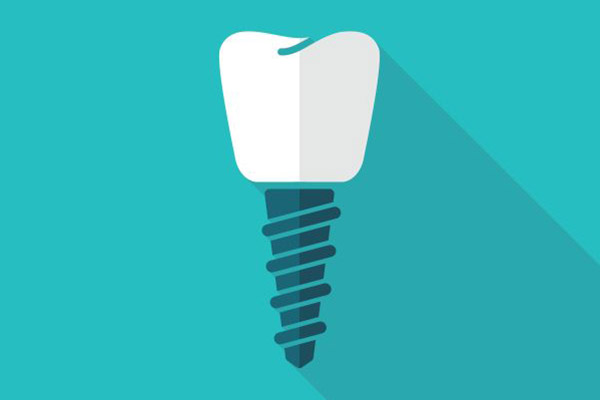What to Expect When Getting a Dental Implant to Replace a Missing Tooth

Dental implants are artificial tooth roots that an implant dentist places in the jawbone so it can bond with the natural bone. This screw-shaped implant acts as a strong foundation to reinforce a replacement tooth. Modern dental implants have been used for over 30 years and are a great solution for missing teeth. Dental implants are an option for people who want their replacement teeth to look, feel, and function naturally and comfortably.
Initial Consultation
We will thoroughly examine the patient’s teeth, gums, and overall oral health during the initial consultation. X-rays and computer tomography scans measure bone density and quantity since an adequate amount of healthy bone in the treatment area is necessary for a successful dental implant. The X-ray also helps us determine where to place the implant. Any impressions and tooth color matching we complete in this appointment help ensure the implant appears as natural as possible. Collecting this information during the consultation determines whether the patient is the right candidate for this procedure and allows us to create the appropriate treatment plan.
Tooth Extraction
During the next appointment, the implant dentist will place the dental implant in the jawbone where the missing tooth is. Before the dental implant placement, the implant dentist must remove any remaining tooth that needs replacement. We will also apply a local anesthetic to numb the area and minimize pain. The tooth removal is a quick process, and patients will feel a small tug and pressure during tooth extraction.
Dental Implant Placement
Depending on the patient’s jaw strength, an implant dentist can choose from two possible dental implant procedures. If the patient’s jawbone is strong and thick enough to protect the tooth from chewing pressure, we will place the implant in the jawbone. If the patient’s jawbone is not strong enough, we will use extra bone from another jawbone area. In this case, the patient may need to wait for the bone to heal before placing the dental implant.
Abutment Placement
Once in place, the implant becomes a part of the natural gumline as the jawbone grows around it. When the implant is stable enough, the implant dentist will place a small connector, called an abutment, on the dental implant just above the gumline. The abutment connects and tightens the implant to the crown so that it stays in place during chewing. We will take Impressions of the mouth once the gums heal to make custom artificial teeth. Patients may choose between receiving a permanent implant or a removable one that they can replace and clean.
After the Surgery
It is normal to experience some discomfort after the dental implant procedure. Patients may experience some bruising and swelling of the gums and face, minor bleeding, and some pain around the treatment area. It is also important to maintain proper dental hygiene and avoid any hard foods that will damage the implant. Once the dental implant process is complete, the patient will schedule periodic follow-up visits.
Dental implants allow patients to enjoy their lives and everyday activities without having to worry about their teeth. The overall timeline of the dental implant process will vary for each person depending on their mouth structure and oral health. Find out whether a dental implant is right for you and determine a procedure plan that fits your needs. Schedule an appointment to speak with an implant dentist on our team who will answer your questions and help you understand this procedure.
Request an appointment here: https://www.carlosesanchezdds.com or call Carlos E. Sanchez, DDS at (209) 690-1118 for an appointment in our Tracy office.
Check out what others are saying about our dental services on Yelp: Dental Implants in Tracy, CA.
Related Posts
Getting dental implants is an important choice in your goals for good oral health. This treatment is also a great way to restore your smile and feel good about your appearance again. If you compare implants to other tooth-replacement options, you will see the differences and benefits that implants offer. The process of getting implants…
If you are missing at least one or more teeth, you may qualify as a candidate for dental implants. Dental implants are the best option for replacing missing teeth. Having missing teeth can harm your oral health, and untreated tooth loss can interrupt your chewing ability and even affect the structure of your mouth. If…
If the idea of getting dental implants intrigues you, it may be time to speak to your dentist about this treatment. You need sturdy teeth for good oral health, as well as to eat and smile normally. Implants not only improve your mouth’s function but will also look just like your natural teeth.While dental implants…
Thinking about choosing dental implants to address your missing teeth problem? Even missing just one tooth can cause someone to experience multiple dental problems, e.g., shifting teeth, headaches, uneven tooth wear. According to the American Dental Association, the average adult between the ages of 20 and 64 has three or more decayed or missing teeth.Understanding…


